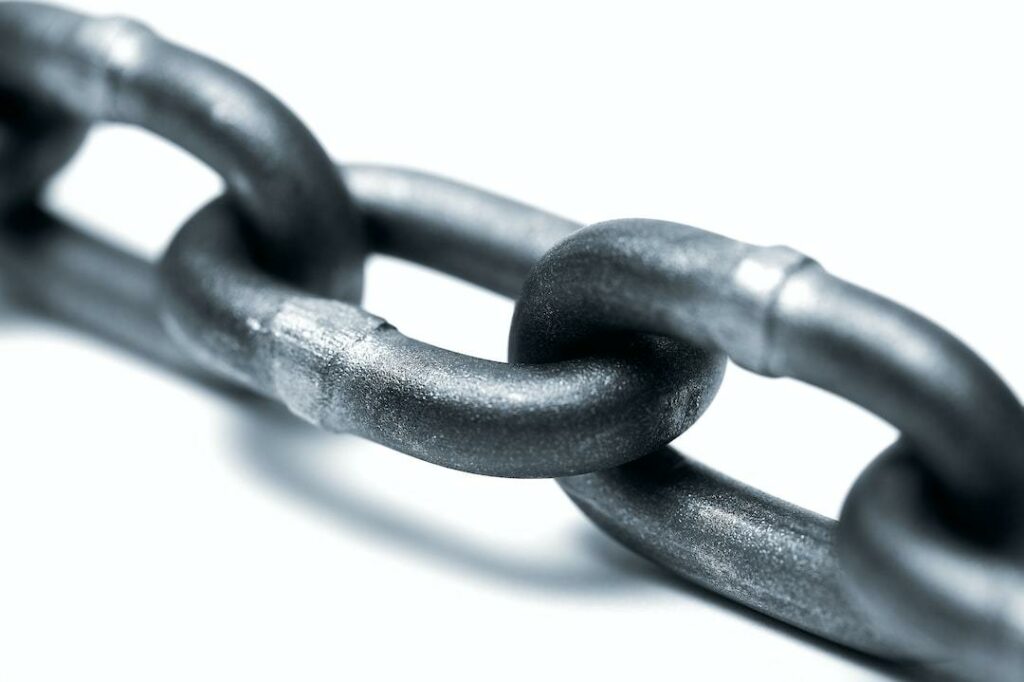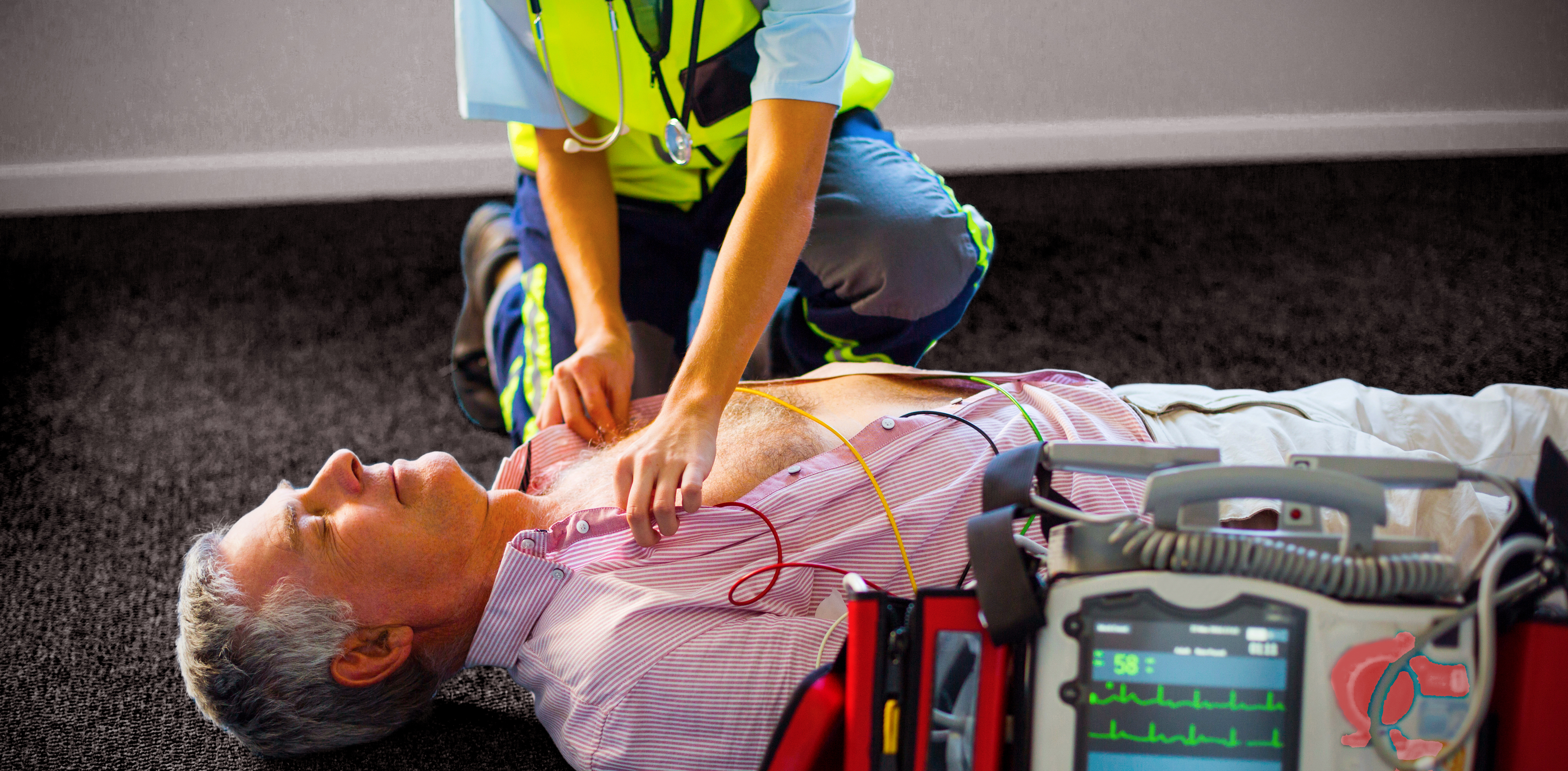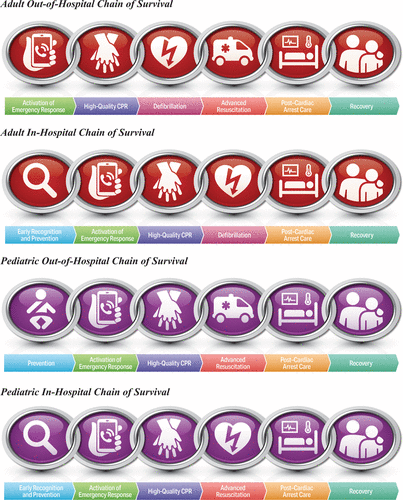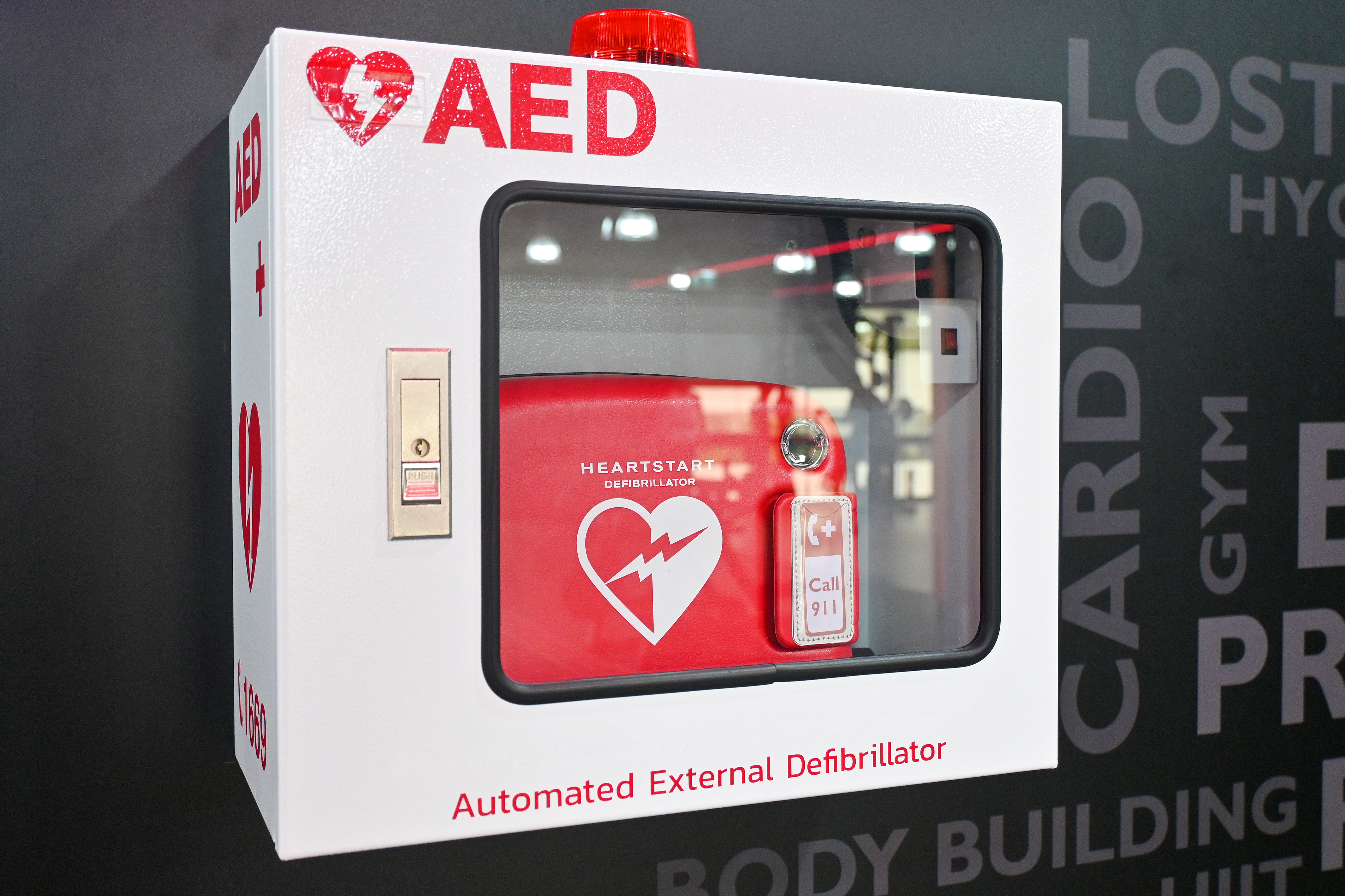
Get CPR training for your team!
If you have any questions feel free to email us at info@emccprtraining.com
CONTACT ONE OF OUR EXPERTS HERE

Last Updated on January 28, 2024 by CPR Training
Mastering the chain of survival order can seem overwhelming.
Indeed, when it comes to emergency response, this is often the #1 challenge people face…
The chain of survival order.
Many are clueless about how to navigate it. But knowing these steps separates an average bystander from a potential lifesaver. Without the proper knowledge of how to respond in an emergency, one may be unable to save a life.
Folks, understanding this sequence isn’t easy.
I’ve heard countless stories where people froze in critical situations because they didn’t know what to do next. It left them feeling helpless and scared of future emergencies.
No surprise there!
But here’s the hard truth…
If we don’t take the time to educate ourselves on these crucial steps, we risk being mere spectators in life-threatening situations instead of active, effective responders. The power to make a difference lies in our hands, starting with proper training and awareness.
Learn CPR and AED use, and improve survival rates in critical situations.
The chain of survival is a crucial sequence that, when followed in rapid succession, can significantly boost survival rates from sudden cardiac arrest (SCA). This series plays an essential role in saving lives threatened by SCA. The American Heart Association’s (AHA) chain comprises five vital links.
This first link involves recognizing immediate symptoms such as loss of consciousness or lack of pulse and initiating swift action by calling for emergency help.
The second step emphasizes providing early cardiopulmonary resuscitation (CPR), focusing particularly on chest compressions to maintain blood flow to vital organs until advanced life support arrives. Studies have shown that early CPR can double or even triple the chances of survival after cardiac arrest.
Prompt defibrillation using an AED forms the third step; this procedure restores regular heart rhythm following SCA.
The American Heart Association (AHA) offers comprehensive training about each aspect within this adult chain order established by AHA.

The first crucial step in the chain of survival is identifying symptoms of sudden cardiac arrest (SCA). Unlike heart attacks, SCAs can strike abruptly without prior discomfort or pain.
An individual experiencing SCA will suffer an instantaneous loss of responsiveness. They won’t react to touch or sound and cannot communicate or exhibit signs of awareness.
A key symptom includes the absence of normal breathing. The victim may gasp for air, which is a reflex known as agonal respiration, but this should not be mistaken for regular breathing.
In certain cases, individuals might experience chest pain leading up to a cardiac arrest event. This could present itself as pressure, a squeezing sensation, fullness, or even feelings similar to indigestion.
Fainting (syncope) or severe dizziness can also precede SCA due to inadequate blood flow caused by irregular heart rhythms (arrhythmias).
CPR and AED utilization are essential components of the adult chain of survival protocol, making them a must-have skill for any health and safety professional. These survival steps are integral parts of the adult chain of survival order.
CPR combines chest compressions with artificial ventilation. This technique aims to maintain brain function during a heart-related emergency until more advanced medical help arrives on the scene. Those who survive SCA invariably receive this intervention rapidly after their heart stops functioning.
The chain of survival order is a critical sequence to follow in any medical emergency, with first aid playing an essential role.
First aid refers to the immediate care given during health crises. It’s not just about saving lives threatened by severe conditions like sudden cardiac arrest (SCA) but also managing minor injuries and illnesses until professional help arrives.
In cases of SCA, administering CPR quickly can significantly raise the chances of survival. When someone experiences instantaneous loss of heart function, rapid succession events occur that could lead to death if left unaddressed.
Early CPR is crucial for increasing the chances of survival.

2020 AHA CPR Chain of Survival
Learn CPR and AED use, and improve survival rates in critical situations.
The power to save lives threatened by sudden cardiac arrest or other emergencies often lies in the hands of bystanders. The key? Effective training programs that teach survival steps and provide advanced life support techniques.
Achieved survival rates are significantly higher when immediate response is initiated, underscoring the importance of early CPR provision and AED use. But where can you acquire these lifesaving skills?
The American Heart Association, a leading authority on heart health, offers globally recognized courses like Basic Life Support (BLS), Advanced Cardiovascular Life Support (ACLS), and Pediatric Advanced Life Support (PALS). Their curriculum revolves around their ‘aha chain’ – a sequence of actions designed to increase chances for successful resuscitation.
The American Red Cross has it covered if you’re after variety. From Adult First Aid/CPR/AED certification to Babysitting Basics, ARC ensures everyone from professionals to lay responders, has access to vital knowledge.
Certification isn’t enough; regular refresher courses prepare your team for action should an emergency occur at work. Remember – those who survive SCA invariably receive care in rapid succession post-event.

Having an AED onsite can be a critical factor in the survival rate of those experiencing sudden cardiac arrest, so let’s look at how to obtain it. But how do you go about acquiring these lifesaving devices? Let’s explore.
The first step involves choosing an appropriate model that suits your organization’s needs. When selecting an AED model, it is essential to consider aspects such as dependability and user-friendliness.
EMC is proud to offer sales from all major AED manufacturers. Our team of experts will guide you through the selection process, ensuring that every detail aligns with your specific requirements.
The placement of your newly acquired AED plays a vital role in its effectiveness during emergencies. The device should be easily accessible and clearly marked so anyone can locate it quickly if needed.
High-traffic areas or locations where physical exertion occurs frequently might serve as ideal spots for installation – remember, instantaneous access without loss of time could mean increased survival steps success.
Merely purchasing an AED isn’t enough; knowing how to use one correctly is equally important. Early CPR combined with defibrillation within 5 minutes significantly increases the chances of surviving SCA according to various studies by organizations like the American Heart Association (AHA).
This highlights why EMC focuses on product sales and offers program management and training programs certified by top institutions including American Red Cross (ARC) and Health & Safety Institute (HSI).
Applying this age-old wisdom here means regularly maintaining equipment ensures readiness at crucial moments – saving lives threatened by sudden cardiac arrest becomes possible only if our tools work flawlessly when needed.
While advanced life support techniques available via professional medical care determine long-term outcomes after SCA incidents, rapid succession actions starting from early recognition to post-care recovery play equally essential roles in achieving desired survival rates.
In essence – investing in quality AED devices coupled with effective training equips us with better chances to combat emergencies, ensuring every second counts towards saving a life.
Important Takeaway:
Having an Automated External Defibrillator (AED) on-site can drastically increase survival rates in sudden cardiac arrest situations. Choosing the right model, ensuring optimal accessibility, providing adequate training, and regular maintenance are key steps to using AEDs during emergencies effectively.
Learn CPR and AED use, and improve survival rates in critical situations.
The first step in the chain of survival is recognizing the emergency and calling for help. Whether it’s a cardiac arrest, choking, or any other life-threatening situation, quickly dial emergency services to get professional assistance on the way.
When a person is unresponsive and not breathing normally, performing CPR can be the difference between life and death. If the person is unresponsive and not breathing normally, begin chest compressions and rescue breaths according to the guidelines provided by organizations like the American Red Cross or the American Heart Association.
An AED is a portable device that delivers an electric shock to the heart in cases of cardiac arrest. If an AED is present, follow the instructions that come with it and put the pads on the individual’s chest as indicated. The AED will analyze the heart rhythm and deliver a shock if necessary.
Advanced life support involves the administration of medications, advanced airway management, and other interventions by trained medical professionals. Once emergency medical services arrive, they will take over and provide the necessary advanced life support measures.
After the initial resuscitation, the person should be transferred to a hospital for further evaluation and treatment. Post-resuscitation care is crucial to optimize the chances of a successful recovery. This may include targeted temperature management, cardiac catheterization, and other specialized interventions.
By understanding and following the chain of survival order, you can play a crucial role in saving lives during emergencies. Remember to stay calm, act quickly, and seek professional help whenever possible.
Continued post-cardiac arrest care involves a collaborative effort across multiple disciplines and extends beyond hospital discharge. This sixth step in the AHA Chain of Survival emphasizes the need for a seamless transition to rehabilitation, including ongoing monitoring, support, and cardiac rehabilitation programs. Family involvement and education also create a supportive environment for the patient’s recovery journey.
Important Takeaway:
When emergencies strike, remember the chain of survival order: recognize and report the emergency, perform CPR, use an AED if available, provide advanced life support when EMS arrives, and ensure transfer to a hospital for post-resuscitation care. Your quick action can be a lifesaver.
The five links in the chain of survival include recognizing an emergency and calling for help, early CPR, rapid defibrillation, effective advanced life support, and integrated post-cardiac arrest care.
The correct order is recognition and activation of the emergency response system; immediate high-quality CPR; rapid defibrillation; basic and advanced medical services; and advanced life support & post-arrest care.
In addition to the standard five steps, some models add prevention (before cardiac arrest) as the first step and rehabilitation (after recovery) as the last one, making it a seven-step process.
The six-chain model includes prevention, early recognition & call for help, prompt CPR with an emphasis on chest compressions, rapid defibrillation if needed, effective paramedic response & coordinated hospital/post-hospital care, and the sixth step of recovery.
This guide has given you insights into recognizing cardiac arrest symptoms early on.
You’ve learned about the chain of survival order, performing CPR, using an AED, and providing basic first aid effectively.
We’ve also highlighted professional training programs from leading health organizations that can further enhance your skills.
We have also covered the vital aspects of purchasing AEDs for onsite use and managing them properly.
In essence, each link in this chain holds great significance to ensure swift action during critical moments.
Check out our other blogs at https://www.emccprtraining.com/blog/.
Contact us at www.emccprtraining.com/contact or 800-695-5655 to learn about our onsite CPR/AED training and AED sales.
Get CPR training for your team!
If you have any questions feel free to email us at info@emccprtraining.com
CONTACT ONE OF OUR EXPERTS HERE